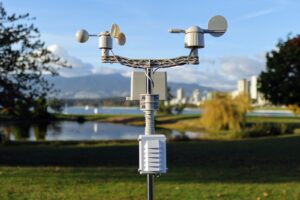The Importance of Integrating Predictive Analytics with IoT Infrastructure
Enhancing IoT Capabilities Through Predictive Analytics
Integrating predictive analytics with IoT infrastructure is becoming essential for businesses aiming to harness the full potential of their IoT deployments. By combining predictive analytics with existing IoT systems, organizations can anticipate future trends, optimize operations, and make data-driven decisions that enhance overall efficiency. In regions like Saudi Arabia and the UAE, where digital transformation is a central pillar of economic growth, leveraging predictive analytics offers significant advantages. Cities such as Riyadh and Dubai are at the forefront of this technological integration, aiming to create smarter, more responsive urban environments through advanced IoT applications.
Predictive analytics enhances IoT capabilities by providing insights into potential future events based on historical and real-time data. This capability is crucial for industries like manufacturing, healthcare, and logistics, where anticipating equipment failures, patient needs, or supply chain disruptions can lead to significant cost savings and improved service delivery. In Saudi Arabia, where industrial efficiency is a key focus under Vision 2030, integrating predictive analytics into IoT systems allows manufacturers to proactively address maintenance issues, reduce downtime, and optimize production processes. By predicting when equipment is likely to fail, businesses can schedule maintenance at the most convenient times, minimizing disruptions and extending the lifespan of critical assets.
Moreover, integrating predictive analytics with IoT infrastructure enables businesses to optimize resource allocation. By analyzing data from IoT devices, predictive models can forecast demand, allowing companies to better manage inventory, allocate resources, and reduce waste. This is particularly relevant in the UAE, where smart city initiatives are driving the adoption of IoT technologies across various sectors. In Dubai, for example, predictive analytics is used to manage energy consumption in buildings, predict traffic patterns, and enhance public safety. By integrating these capabilities with IoT infrastructure, cities can create more sustainable and efficient environments, aligning with broader goals of reducing carbon footprints and enhancing quality of life.
Challenges in Integrating Predictive Analytics with IoT Systems
While the benefits of integrating predictive analytics with IoT infrastructure are clear, the process is not without challenges. One of the primary obstacles is ensuring data compatibility and interoperability between different IoT devices and platforms. In many cases, IoT devices generate data in various formats, which can complicate the integration process. For businesses in Riyadh and Dubai, where IoT deployments are often large-scale and diverse, ensuring that data from different devices can be seamlessly integrated into predictive models is crucial. To address this, companies must adopt standardized data formats and protocols that facilitate smooth integration, allowing predictive analytics to be applied effectively across the entire IoT ecosystem.
Another significant challenge is the need for robust data management and storage solutions. Predictive analytics relies on large volumes of data to generate accurate forecasts, which requires effective data collection, storage, and processing capabilities. In Saudi Arabia and the UAE, where data privacy and security are top priorities, businesses must ensure that their data management practices comply with local regulations and industry standards. This includes implementing advanced security measures to protect sensitive data from cyber threats and ensuring that data storage solutions are scalable to accommodate the growing volume of information generated by IoT devices. By addressing these challenges, companies can create a secure and efficient data environment that supports the integration of predictive analytics with IoT infrastructure.
Furthermore, integrating predictive analytics with IoT systems requires specialized skills and expertise. Data scientists, analysts, and IT professionals must work together to develop and deploy predictive models that are tailored to the specific needs of the business. In regions like Riyadh and Dubai, where the demand for digital talent is high, companies may face difficulties in recruiting and retaining the necessary expertise. To overcome this, businesses can invest in training and upskilling programs, collaborate with educational institutions, or partner with technology providers that offer specialized predictive analytics solutions. By building a skilled workforce, companies can ensure the successful integration of predictive analytics into their IoT infrastructure, driving better outcomes and competitive advantages.
Strategic Approaches to Integrating Predictive Analytics with IoT
Developing a Comprehensive Integration Strategy
For business leaders in Saudi Arabia and the UAE, developing a comprehensive strategy for integrating predictive analytics with IoT infrastructure is essential for maximizing the value of these technologies. This strategy should begin with a clear understanding of the specific business goals and how predictive analytics can support them. Whether the objective is to reduce operational costs, enhance customer experiences, or improve asset management, aligning predictive analytics initiatives with business objectives ensures that investments are targeted and effective. In Riyadh and Dubai, where smart city projects and industrial innovation are key priorities, a strategic approach to integration can help businesses achieve their digital transformation goals.
An effective integration strategy also involves selecting the right tools and technologies for predictive analytics. With a wide range of analytics platforms and IoT solutions available, businesses must carefully evaluate their options to ensure compatibility, scalability, and ease of use. In the UAE, where the technology landscape is rapidly evolving, selecting platforms that offer flexibility and support for future growth is critical. This may involve choosing cloud-based analytics solutions that can easily scale with the business or investing in edge computing technologies that bring analytics capabilities closer to the data source. By choosing the right tools, companies can create a robust and adaptable predictive analytics framework that integrates seamlessly with their IoT infrastructure.
Collaboration is another key component of a successful integration strategy. In Saudi Arabia and the UAE, where public and private sectors are working closely to drive digital transformation, businesses can benefit from partnerships with government agencies, technology providers, and industry associations. These collaborations can provide access to resources, expertise, and funding that support the integration of predictive analytics with IoT. By leveraging these partnerships, companies can accelerate their integration efforts, overcome common challenges, and ensure that their predictive analytics initiatives are aligned with broader industry trends and national priorities.
Ensuring Data Quality and Security in Predictive Analytics Integration
Ensuring data quality and security is critical when integrating predictive analytics with IoT infrastructure. The accuracy and reliability of predictive models depend on the quality of the data they use. In Saudi Arabia and the UAE, where data integrity is essential for maintaining trust and compliance, businesses must implement rigorous data quality management practices. This includes validating data from IoT devices, addressing missing or inconsistent data, and regularly reviewing and updating predictive models to reflect the latest information. By prioritizing data quality, companies can enhance the accuracy of their predictive analytics and achieve better decision-making outcomes.
Data security is equally important in the integration process. As predictive analytics involves processing large volumes of potentially sensitive data, robust security measures must be in place to protect against unauthorized access and data breaches. In Riyadh and Dubai, where cybersecurity is a national priority, companies must ensure that their predictive analytics platforms comply with local data protection laws and industry standards. This includes implementing encryption, access controls, and regular security audits to safeguard data throughout the analytics lifecycle. By maintaining a strong security posture, businesses can protect their data assets and build trust with customers, partners, and regulators.
Lastly, companies should adopt a continuous improvement approach to integrating predictive analytics with IoT infrastructure. As technologies and business needs evolve, predictive models and integration strategies must be regularly reviewed and refined. In the dynamic environments of Saudi Arabia and the UAE, where digital transformation is ongoing, businesses must remain agile and adaptable. By continuously monitoring the performance of predictive analytics and making adjustments as needed, companies can ensure that their IoT systems remain effective and aligned with their strategic objectives. This commitment to continuous improvement not only maximizes the value of predictive analytics but also positions businesses for long-term success in an increasingly data-driven world.
Conclusion: Unlocking the Full Potential of IoT with Predictive Analytics
In conclusion, integrating predictive analytics with IoT infrastructure offers significant opportunities for businesses to enhance efficiency, reduce costs, and drive innovation. For leaders in Saudi Arabia and the UAE, the strategic integration of these technologies can support broader digital transformation goals while addressing key challenges in data management, security, and talent acquisition. By developing a comprehensive integration strategy, prioritizing data quality, and fostering collaboration, companies can unlock the full potential of predictive analytics in their IoT ecosystems. As the role of predictive analytics continues to grow, those who embrace these advanced capabilities will be well-positioned to lead in the competitive landscape of the future.
—
#PredictiveAnalytics #IoTIntegration #SmartTechnology #DigitalTransformation #DataAnalytics #IoTSolutions #BusinessSuccess #TechInnovation #RiyadhTechnology #DubaiTech #IoTInUAE #IoTInSaudiArabia













